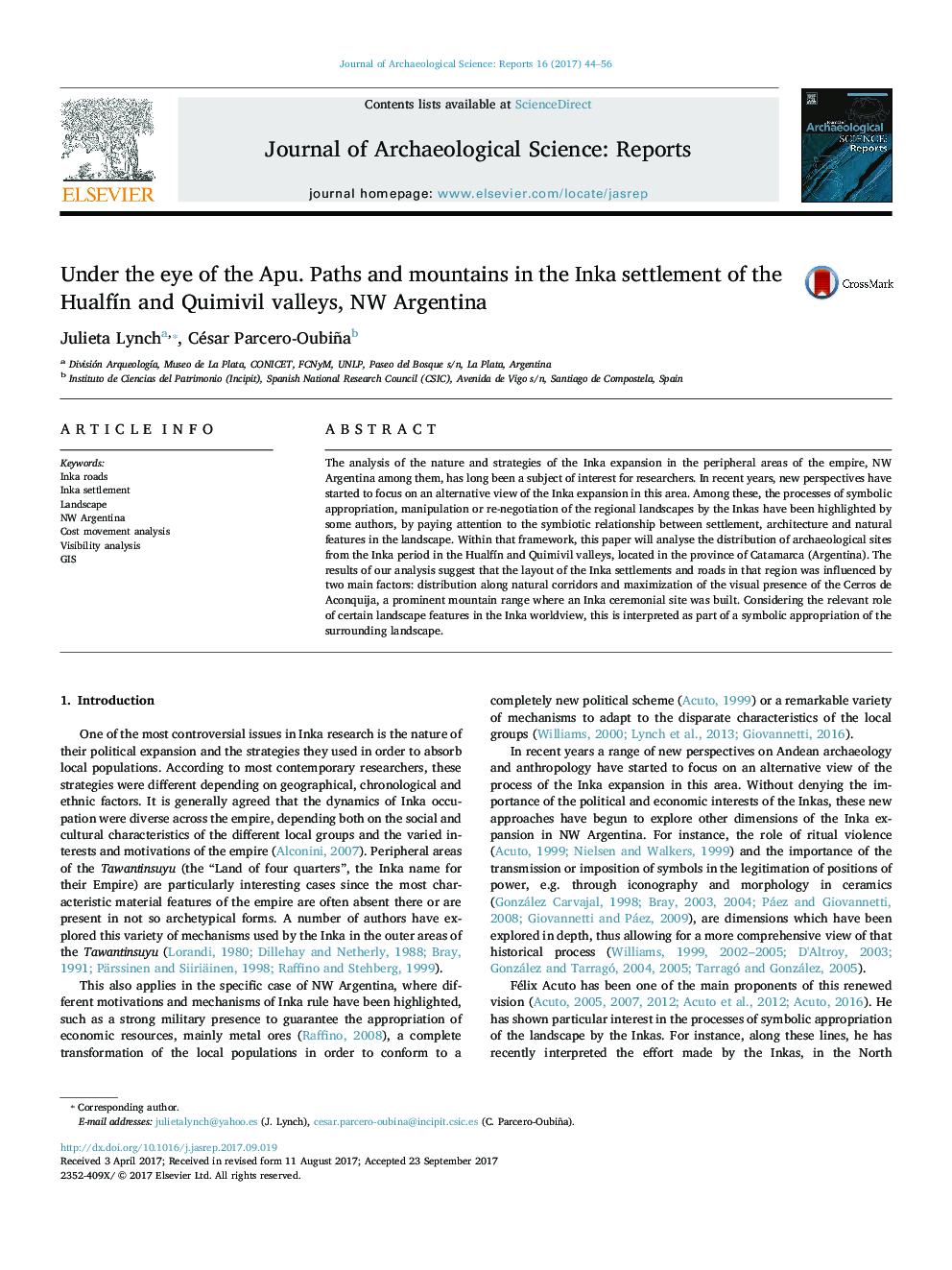| Article ID | Journal | Published Year | Pages | File Type |
|---|---|---|---|---|
| 5112150 | Journal of Archaeological Science: Reports | 2017 | 13 Pages |
Abstract
The analysis of the nature and strategies of the Inka expansion in the peripheral areas of the empire, NW Argentina among them, has long been a subject of interest for researchers. In recent years, new perspectives have started to focus on an alternative view of the Inka expansion in this area. Among these, the processes of symbolic appropriation, manipulation or re-negotiation of the regional landscapes by the Inkas have been highlighted by some authors, by paying attention to the symbiotic relationship between settlement, architecture and natural features in the landscape. Within that framework, this paper will analyse the distribution of archaeological sites from the Inka period in the HualfÃn and Quimivil valleys, located in the province of Catamarca (Argentina). The results of our analysis suggest that the layout of the Inka settlements and roads in that region was influenced by two main factors: distribution along natural corridors and maximization of the visual presence of the Cerros de Aconquija, a prominent mountain range where an Inka ceremonial site was built. Considering the relevant role of certain landscape features in the Inka worldview, this is interpreted as part of a symbolic appropriation of the surrounding landscape.
Related Topics
Social Sciences and Humanities
Arts and Humanities
History
Authors
Julieta Lynch, César Parcero-Oubiña,
